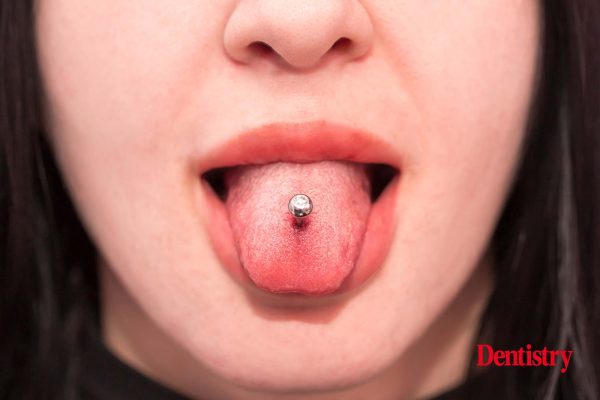Tongue and lip piercings can cause gums to bleed and gaps in teeth, prompting dentists to urge for their removal.
Dental professionals are calling for oral piercings to be removed to save teeth and gums, and protect them from further damage.
Presenting the study at Europerio10, the world’s leading congress in periodontology and implant dentistry, lead author Professor Clemens Walter said dentists should inform their patients of the potential complications.
Removal strongly encouraged
‘Our study found that many people with oral piercings had deep pockets and gaps around their teeth, and receding and bleeding gums,’ he said.
‘These are all signs of periodontitis, also called gum disease, which can lead to tooth loss. People with tongue and lip piercings should remove them to protect their teeth and gums from further damage.
‘The likelihood of tooth and gum damage appeared to increase with the duration of wearing a lip or tongue piercing.
‘Dentists should inform their patients about the risk of periodontal complications when wearing oral piercings, and people with these piercings should be strongly encouraged to remove them.’
Dentistry’s top stories
- Sara Hurley CDO confirms new targets for NHS dentistry
- LGBTQ+ in dentistry – ‘you as a dentist is more important than who you’re dating’
- EU puts forward ban on flavoured heated tobacco products
- Dental students ‘likely to under-report racist incidents’, says study
- Associates beware – the changing HMRC guidance and what this means.
Problems with piercings
Around 5% of young adults have oral piercings, with the tongue being the most common. Women are four times more likely to have an oral piercing than men.
The review collected the best available evidence on piercings and oral health, featuring eight studies with 408 participants who had a total of 236 lip piercings and 236 tongue piercings. Every fifth patient had piercings in more than one oral site.
Wearing duration also varied from one month to 19 years, while the majority of jewellery was made from metal.
The studies compared teeth and gums next to the piercing with teeth and gums elsewhere in the mouth.
Findings included:
- Tongue piercings – three in five studies found deeper pockets around teeth next to the piercing while three in four studies observed wider gaps
- All four studies that examined patients for receding gums found this problem in those with tongue piercings. Two in three studies found bleeding gums
- Lip piercings – the main finding was receding gums, which was observed in three out of four studies.
Follow Dentistry.co.uk on Instagram to keep up with all the latest dental news and trends.


